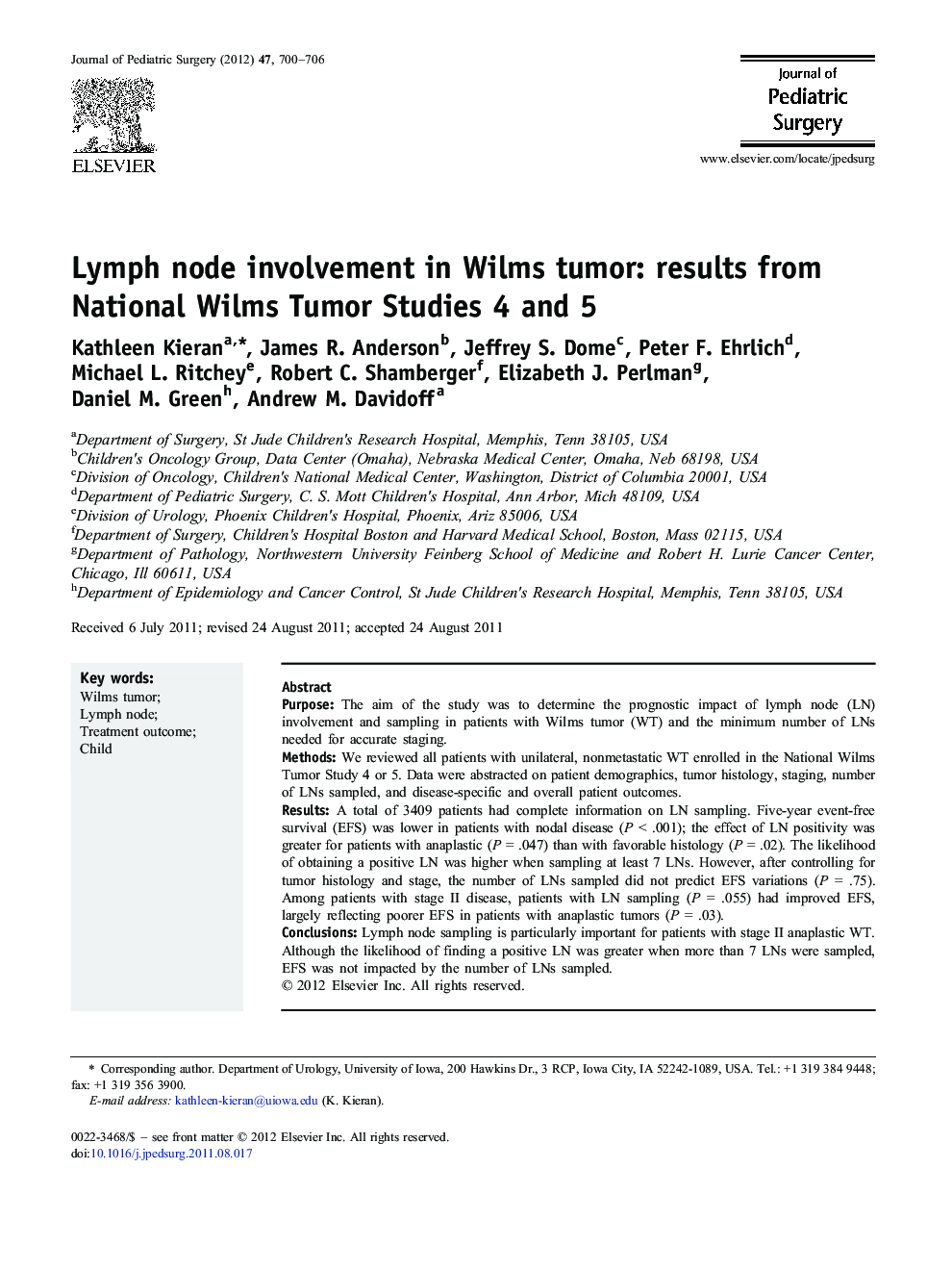| Article ID | Journal | Published Year | Pages | File Type |
|---|---|---|---|---|
| 6217239 | Journal of Pediatric Surgery | 2012 | 7 Pages |
PurposeThe aim of the study was to determine the prognostic impact of lymph node (LN) involvement and sampling in patients with Wilms tumor (WT) and the minimum number of LNs needed for accurate staging.MethodsWe reviewed all patients with unilateral, nonmetastatic WT enrolled in the National Wilms Tumor Study 4 or 5. Data were abstracted on patient demographics, tumor histology, staging, number of LNs sampled, and disease-specific and overall patient outcomes.ResultsA total of 3409 patients had complete information on LN sampling. Five-year event-free survival (EFS) was lower in patients with nodal disease (P < .001); the effect of LN positivity was greater for patients with anaplastic (P = .047) than with favorable histology (P = .02). The likelihood of obtaining a positive LN was higher when sampling at least 7 LNs. However, after controlling for tumor histology and stage, the number of LNs sampled did not predict EFS variations (P = .75). Among patients with stage II disease, patients with LN sampling (P = .055) had improved EFS, largely reflecting poorer EFS in patients with anaplastic tumors (P = .03).ConclusionsLymph node sampling is particularly important for patients with stage II anaplastic WT. Although the likelihood of finding a positive LN was greater when more than 7 LNs were sampled, EFS was not impacted by the number of LNs sampled.
